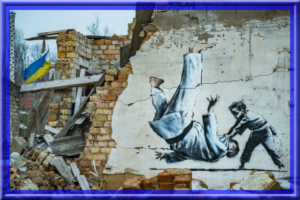
Why ISIS attacked Russia and why Russia blames Ukraine
Editor’s Note: Copyright, Project Syndicate. This article was published by Project Syndicate on March 25, 2024, and has been republished by the Kyiv Independent with permission. The opinions expressed in the op-ed section are those of the authors and do not purport to reflect the views of the Kyiv Independent.
DOHA – The terrorist attack on the Crocus City Hall concert venue in a Moscow suburb was no bolt from the blue. The Kremlin dismissed U.S. intelligence warnings of an imminent attack by “extremists,” possibly to shift the blame to a convenient scapegoat when the attack came.
The murder of 137 concert-goers is but the latest atrocity in a decade-long struggle between the Islamic State (ISIS) and Russia. The die was cast on Sept. 30, 2015, when Russia intervened in Syria to support the collapsing regime of Bashar al-Assad. ISIS operatives responded a month later by infiltrating Egypt’s Sharm El-Sheikh airport and planting a bomb on a Russian Airbus, killing all 224 passengers and crew.
In retribution, in September 2017, Russia is alleged to have killed ISIS’ former “war minister,” Gulmurod Khalimov, who had once been the commander of the police special forces of Tajikistan’s Interior Ministry and who had fought beside the Russian forces during the Tajik Civil War. All of the alleged Crocus City Hall attackers are from Tajikistan.
The Syria-based “provinces” of ISIS – such as the defunct Homs and Raqqa – fought Russian regulars and irregulars, including the mercenary Wagner Group, in dozens of battles, most notably in Palmyra in 2015, 2016, and 2017. The December 2016 battles were particularly embarrassing for Russian President Vladimir Putin because ISIS forces recaptured the city from his forces and allies.
Between 2015 and 2024, Russia has supported many of ISIS’ avowed enemies. That includes military and intelligence coordination with Hezbollah, political support for Hamas, and political, intelligence, and possibly military support for the Taliban. All three organizations fought bitter battles against ISIS “provinces” and cells in Lebanon, Syria, Gaza, and Afghanistan.
The Wagner Group and its successor remnants in the so-called Africa Corps have also fought ISIS in Libya, Mozambique, and Mali. ISIS-Khorasan (ISIS-K), the branch whose operatives are suspected to have committed the Crocus City Hall attack, is active primarily in Afghanistan and Pakistan. The Khorasan “province” formally emerged in January 2015, when defectors from the Taliban and other groups pledged allegiance to ISIS.
Like other relatively large ISIS provinces, ISIS-K is a brigade-sized military organization that has fought against almost every state and non-state force in or bordering its areas of operation. It carried out a suicide attack in August 2021 that killed 13 American military personnel and at least 169 Afghans in Kabul during the U.S. withdrawal from Afghanistan; an attack on the Russian embassy in Kabul that killed two of its staff in September 2022; and, in January, allegedly, a twin suicide bombing of a ceremony in Iran commemorating the death of Major-General Qassem Suleimani.
Watch:
![]()




I just posted the video I was talking about in my sidebar after I cleaned it up a bit. Watch it to understand the terrible lives that Russian citizens live underneath this cheap dictator who kills anyone who gets in his way. It’s far past time that someone killed him. They would all be far better off.
There’s another video available which shows Putin in his true colors. That was in his first term and it involved the sinking of the huge Kursk submarine. You can watch it at this link but I just bought highly professional software in order to enhance it. Not to put to large a point on it, the video I watched early this morning was an hour and 14 minutes long. Not certain what that means.